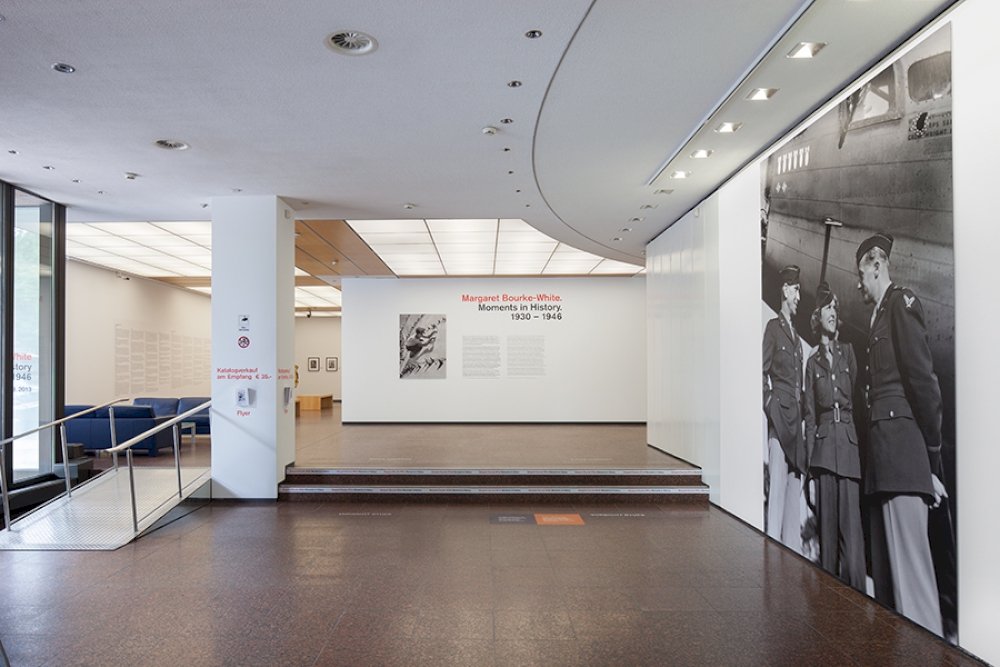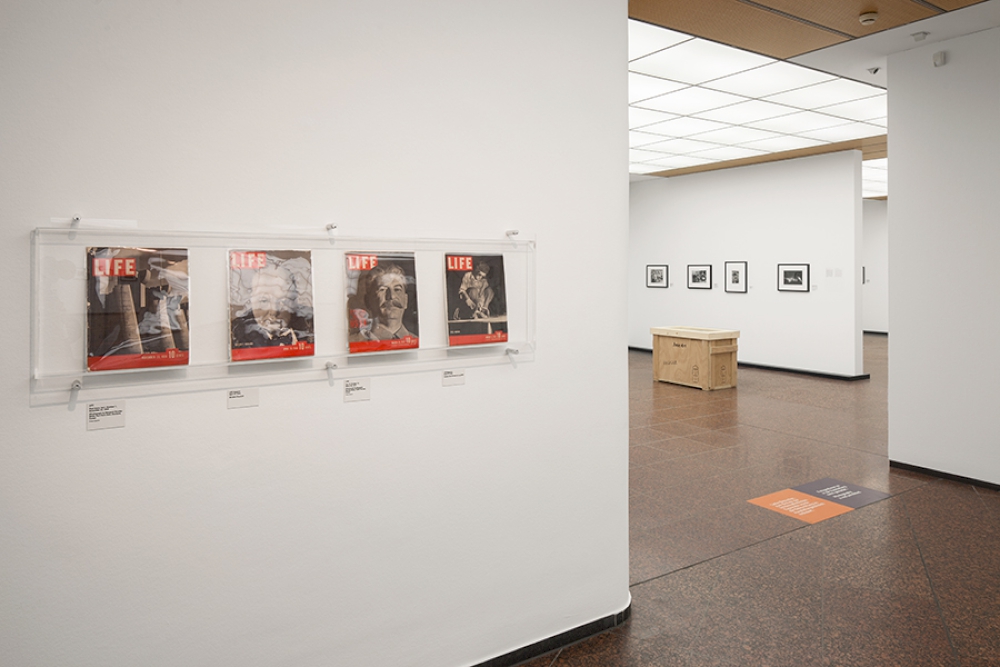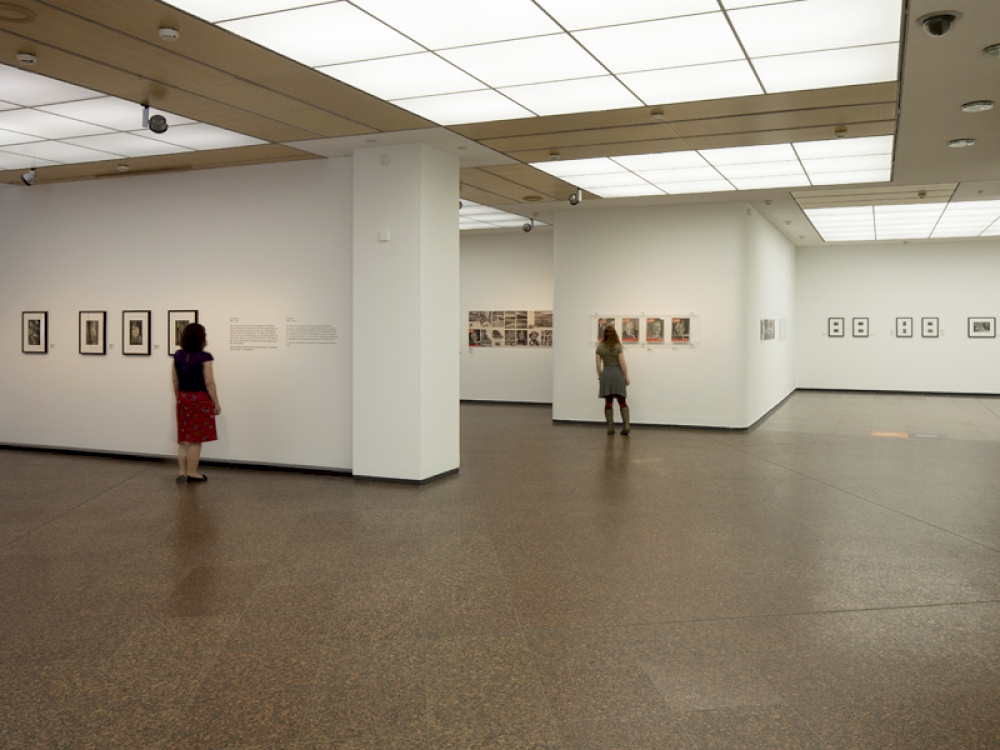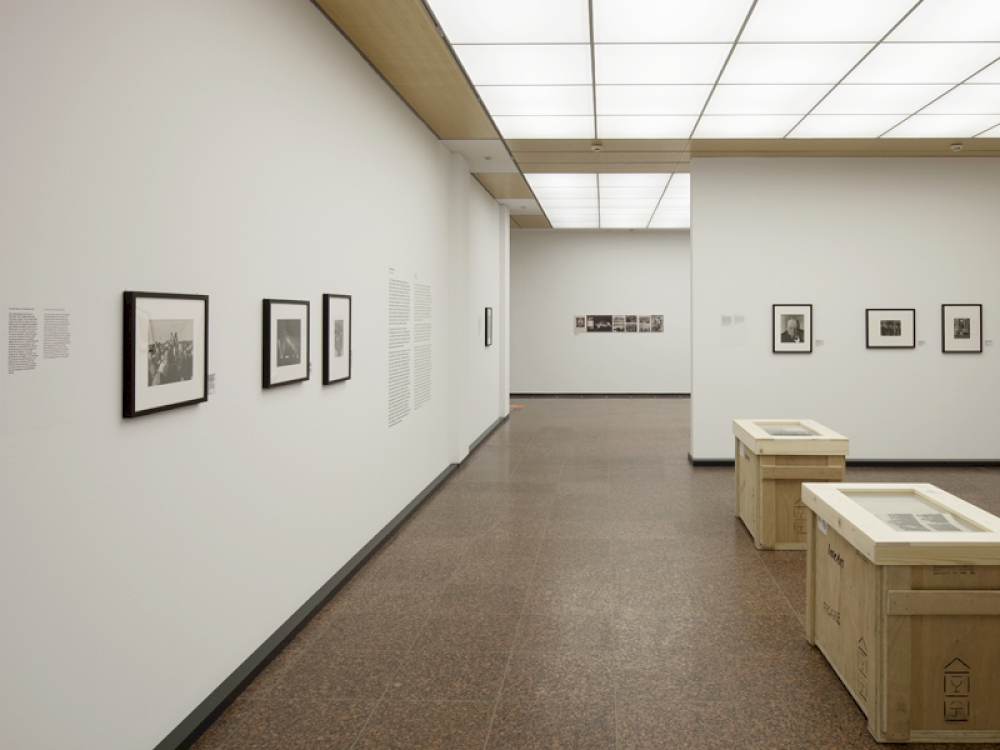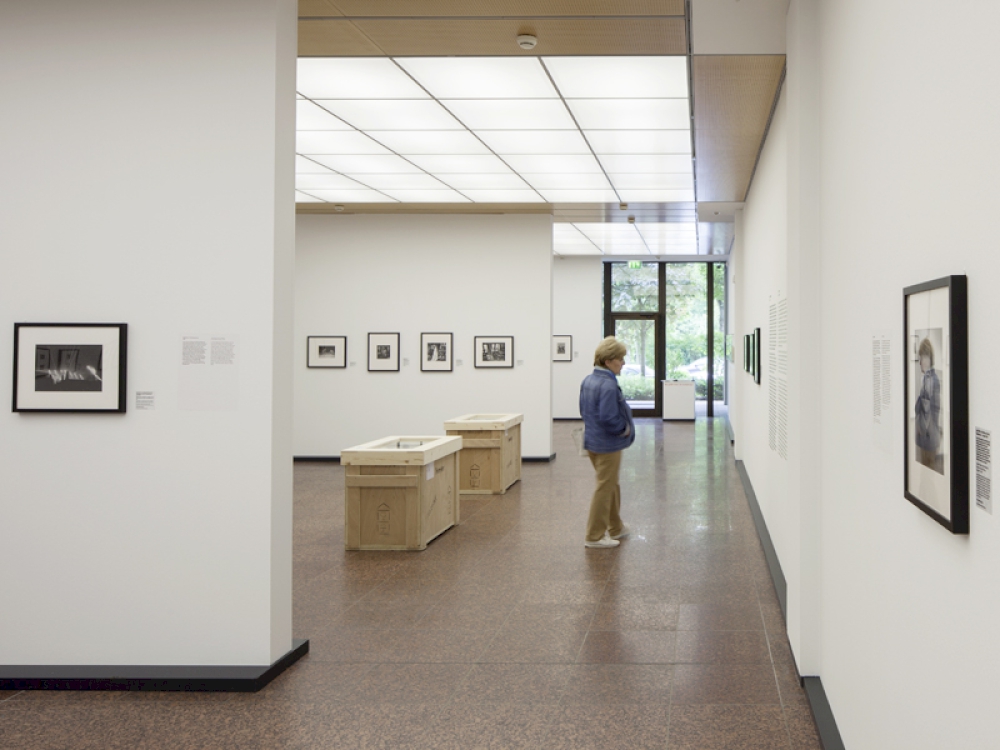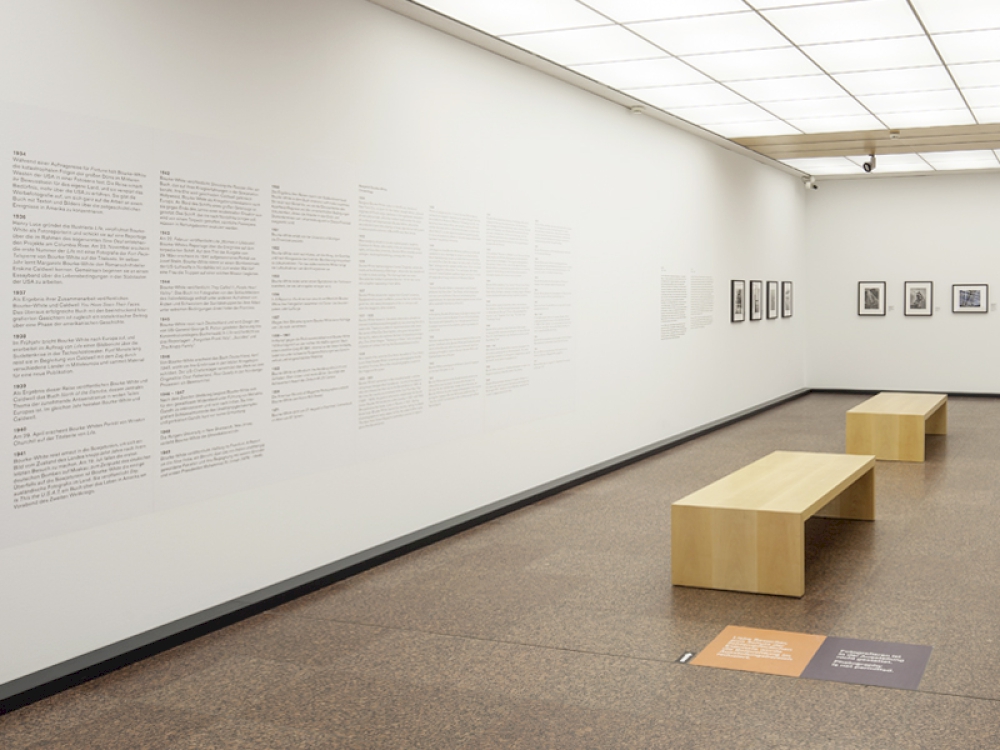Margaret Bourke-White Moments in History. 1930 - 1946.
„She was the first woman to photograph the steel mills; the first to belong to the team of photographers for Fortune and Life Magazines; the first foreigner to photograph the Soviet Union in 1930; the first female photographer to work for the U.S. Air force ( the first uniform for a female war correspondent was designed for her); the only foreign photographer present in Moscow when the first German bombs fell on the city on July 19, 1941, right after the war between Russia and Germany began.” Oliva María Rubio
Margaret Bourke-White (1904–1971) was a media star in America’s male-dominated world of photographers. Her smiling portrait in a flight suit prior to a bombing mission, camera in hand, was immensely popular among servicemen. But she always had to fight for her career. The closed doors she encountered did not dissuade her. Her photographs attest to her “insatiable desire to be on the scene when history is being made,” as she put it.
The exhibition presents her oeuvre with the aid of 154 photographs, letters, publications, and magazines. The main focus is on her work from the thirties and forties in the Soviet Union, Czechoslovakia, Germany, England, and Italy. In addition, photographs that are characteristic for Bourke-White are also included, such as those she took while on assignment for Eastern Airlines and the Chrysler Corporation.
Exhibited documents include several of her captioned photo spreads for Fortune and Life magazines as well as excerpts from her correspondence with celebrities from the fields of politics and culture, such as Winston Churchill and Georgia O’Keeffe. Bourke-White wanted to be the “eyes of the age.” She traveled all over the world for Life magazine, one of the best-known and most ambitious illustrated periodicals at the time. The first cover of Life’s new incarnation in November 1936 featured a photo taken by her.
Her photographs were often chosen for the cover of Life, and she worked for the magazine for many years. Her career began in 1927 in Cleveland, where she photographed the city’s steel mills. She traveled to the Soviet Union just as the first five-year plan was being implemented; she documented the drought of 1934 in the US, the German invasion of the USSR in 1941, and the Allied bombing of Germany. On assignment for Life, she photographed destroyed German cities in the summer of 1945. She was present during the liberation of Buchenwald concentration camp and the Leipzig-Mockau forced labor camp. Her photo “The Living Dead of Buchenwald” went round the world. Once she even made headlines herself: on 22 January 1944, Life published her story about an air raid on El Aouina airfield in Tunis – Germany’s most important base for reinforcements arriving from Sicily – titled “Life’s Bourke-White goes Bombing.” Her photographs document an entire era of world history.
The exhibition was curated by Oliva María Rubio. In Germany, it will only be shown in Berlin and Munich. The exhibition was organized by La Fábrica Madrid in collaboration with the Kunstfoyer der Versicherungskammer Bayern (Munich), the Martin-Gropius- Bau (Berlin), the Preus Museum (Norway), the Fotomuseum Den Haag (The Netherlands), and Syracuse University, Syracuse, New York.
Exhibition Catalog
Margaret Bourke-White. Moments in History
Published by La Fábrica, Madrid, 2013
Authors: Oliva María Rubio and Sean Quimby
Hardcover 26.7 x 22.6 cm, 191 pages, 150 illustrations, English
ISBN 978-84-15303-96-1
Curator
Oliva María Rubio
